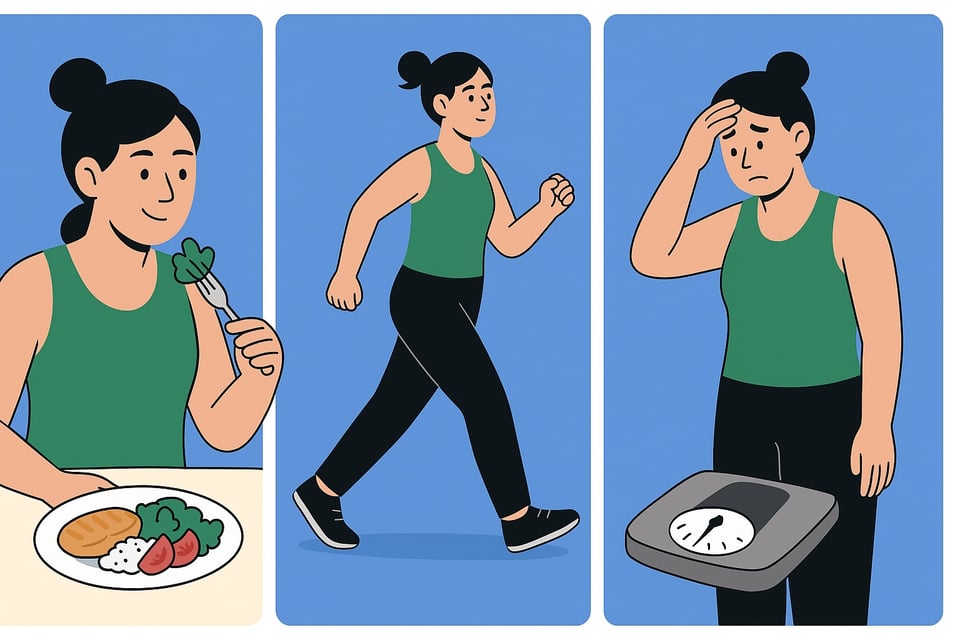The Truth About Blood Sugar and Weight Loss — Without a CGM
Welcome to BTS Weekly. Today, we’re talking about a hidden blocker in your weight loss journey—and no, it’s not willpower.

You’ve cleaned up your diet. You’re moving more. Maybe you’ve even cut calories. But the scale? Stuck.
Here’s the part most diets miss: it's not just what you eat—it's how your blood sugar responds.
📊 Why Blood Sugar Matters
Every time you eat, your body converts carbs into glucose. That glucose needs help getting into your cells, and insulin is the key. When insulin is high, your body stores fat. You can’t effectively burn fat while insulin is busy lowering your blood sugar.
More spikes = more insulin = more fat storage.
And it doesn’t take candy to spike you. Big bowls of rice, fruit juices, even "healthy" granola can do the trick (JAMA, 2002).
❌ What Happens When You Spike Too Often
Crash and get hungrier faster
Store more belly fat
Crave sugar to feel better
It’s a feedback loop many people don’t even realize they’re in.
🧠 Why This Matters—Even If You’re Not Diabetic
Over 1 in 3 U.S. adults are prediabetic, and many don’t even know it (CDC, 2023). Glucose spikes can happen long before blood sugar reaches "diagnostic" levels. This isn’t just about weight—it’s about metabolic resilience.
Stable blood sugar means more energy, fewer cravings, and better long-term health.
🔢 What’s a Healthy Range?
You don’t need diabetes to benefit from stable glucose. Here are some simple benchmarks (ADA, 2023):
Fasting glucose: < 100 mg/dL
Post-meal peak: < 140 mg/dL
160+? That’s insulin surge territory
The flatter your curve, the easier your body shifts into fat-burning mode.
📅 So Do You Need a CGM?
Not necessarily. CGMs can be eye-opening, but they’re also pricey, sometimes stressful, and not always necessary.
The principles that matter most:
Add protein to meals
Anchor carbs with fats/fiber
Walk after eating
🏃 Exercise and Glucose
Even a 10-minute walk after a meal helps (Hijikata & Yamada, 2011):
Lowers blood sugar without insulin
Keeps you in fat-burning mode
Muscles can pull in glucose on their own—no insulin required.
👩🌾 What About Midlife Women?
As estrogen drops, insulin sensitivity can dip too. That means foods that once worked might now lead to surprise spikes.
Midlife is the perfect time to adjust—not restrict, but realign your meals to your biology.
✅ A Few Quick Wins
Swap cereal for eggs
Add veggies to lunch
Walk after dinner
Eat the carb after the protein
❤️ Final Word: Control the Spike. Reset Your Next Week.
Stable glucose = low insulin = easier fat burning.
Need help spotting your personal food patterns? GlucoSpike AI might be worth a look—it’s a simple way to see how meals could affect your glucose, without the tech hassle.
Progress doesn’t need to be complicated. Just consistent.
See you next week,
—Team GS
